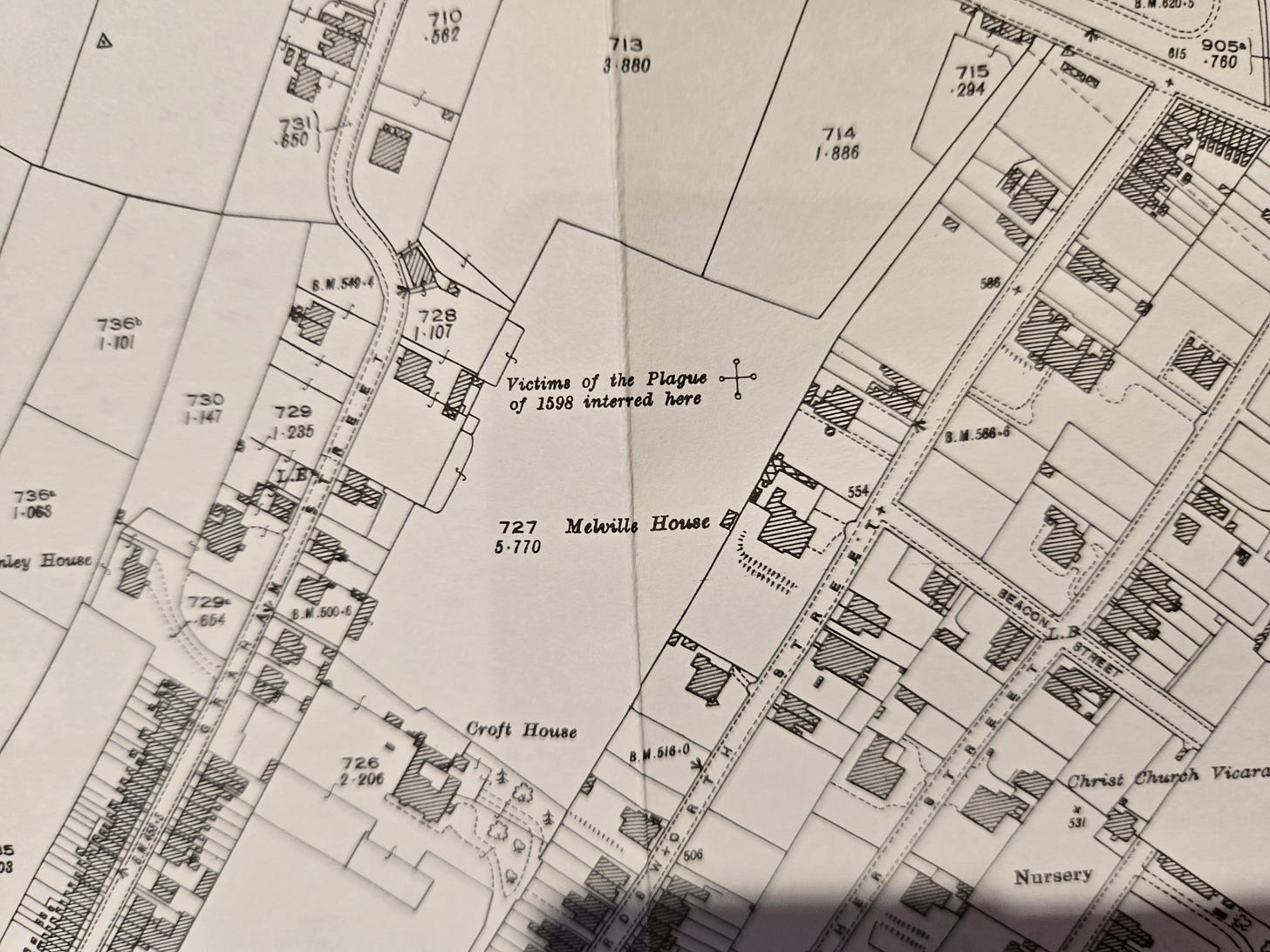Beneath the Street: The Forgotten Dead of 1598
1598’s plague dead were forgotten — until I found them again
I wasn’t looking for anything paranormal tonight. Just indulging one of my usual rituals — digging into old maps and records of my hometown, Penrith, UK. I'm an amateur historian by heart, and a paranormal enthusiast by inclination, so when something unusual appears in the folds of history, I tend to chase it down.
That afternoon, I was poring over an 1898 ordnance survey map of the area. I’ve looked at dozens of these before, cross-referencing the old town layouts with modern roads. But something in the top corner caught my eye — something I’d never noticed before.
A tiny note, tucked in the margin of a field that no longer exists:
“Victims of the plague of 1598 interred here.”
It stopped me cold. Not just because I’d never heard of a plague pit here before — and I thought I knew this town’s history fairly well — but because of how quietly it had been recorded. No monument. No public marker. Just a fading annotation on a map over a century old. I notices on later maps 1903 and 1923, this marker was no longer present. Had they forgotten?
Curiosity turned to quiet urgency. I overlaid the old map onto Google Maps, aligning the roads, landmarks, and gradients until they matched. And there it was — clear as day. The plague burial site sat right underneath a modern residential street.
Two 1930s semi-detached homes, built right over the top of it.
That discovery left me with a creeping unease I couldn’t shake. These weren’t homes next to an old cemetery. These were homes on top of a site where victims of one of history’s most feared diseases were buried en masse — likely hastily, likely anonymously, possibly never moved.
I started asking questions — the kind that spiral quickly once you tug on threads like this.
Were these bodies ever exhumed? Or were they simply forgotten?
Did the builders find anything? Did the planners know?
Do the current residents have any idea what’s beneath their feet?
Have they ever experienced anything strange? Electrical faults? Unexplained cold spots? Dreams they can't explain?
There are no official reports I could find. No ghost stories tied to this street. No whispers of bad luck or misfortune passed down in pub tales. Just silence. And yet… I can’t help but feel that something is off about how quickly this chapter of history was buried — both literally and figuratively.
We tend to think of haunted places as old castles, abandoned asylums, or fog-wrapped moors. But sometimes, it’s the quiet rural town roads. The places no one thinks to question. The homes that were never meant to be haunted — but were simply built on top of memory.
Penrith, like many old towns, wears layers. Ancient trackways beneath market roads. Drovers’ routes replaced by quiet suburban cul-de-sacs. And sometimes — as I’ve now found out — family homes built over forgotten mass graves.
There’s no conclusive haunting here. No flickering lights or spectral figures (at least, not yet). But as someone who looks into both the historical and the strange, I’ve learned that forgetting has a cost. And sometimes, the ground remembers even when we don’t.
I’ll be keeping an eye on that street. Maybe even knocking on a few doors.
Because if there’s one thing I’ve learned from years of studying the paranormal, it’s this:
What lies beneath doesn’t always stay quiet forever.






